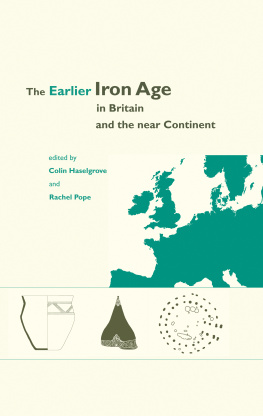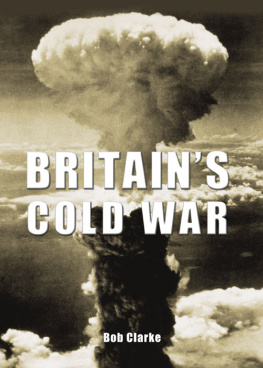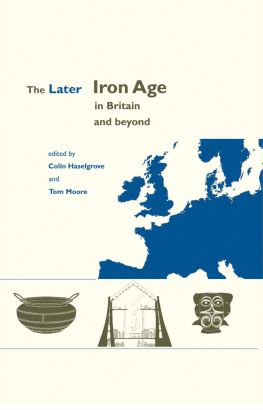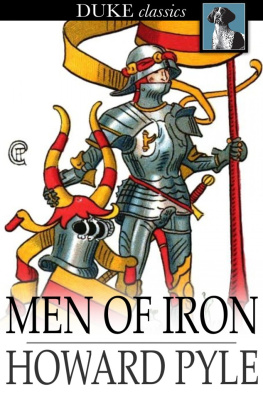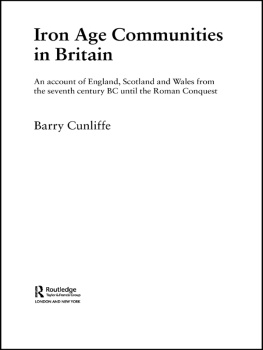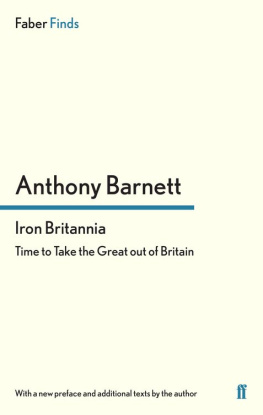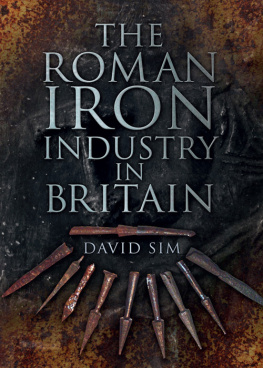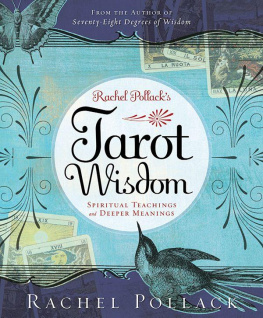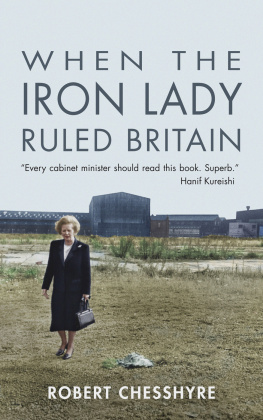Rachel PopeColin Haselgrove - The Earlier Iron Age in Britain and the Near Continent
Here you can read online Rachel PopeColin Haselgrove - The Earlier Iron Age in Britain and the Near Continent full text of the book (entire story) in english for free. Download pdf and epub, get meaning, cover and reviews about this ebook. year: 2006, publisher: Casemate Publishers & Book Distributors, LLC, genre: Home and family. Description of the work, (preface) as well as reviews are available. Best literature library LitArk.com created for fans of good reading and offers a wide selection of genres:
Romance novel
Science fiction
Adventure
Detective
Science
History
Home and family
Prose
Art
Politics
Computer
Non-fiction
Religion
Business
Children
Humor
Choose a favorite category and find really read worthwhile books. Enjoy immersion in the world of imagination, feel the emotions of the characters or learn something new for yourself, make an fascinating discovery.
- Book:The Earlier Iron Age in Britain and the Near Continent
- Author:
- Publisher:Casemate Publishers & Book Distributors, LLC
- Genre:
- Year:2006
- Rating:5 / 5
- Favourites:Add to favourites
- Your mark:
- 100
- 1
- 2
- 3
- 4
- 5
The Earlier Iron Age in Britain and the Near Continent: summary, description and annotation
We offer to read an annotation, description, summary or preface (depends on what the author of the book "The Earlier Iron Age in Britain and the Near Continent" wrote himself). If you haven't found the necessary information about the book — write in the comments, we will try to find it.
The Earlier Iron Age in Britain and the Near Continent — read online for free the complete book (whole text) full work
Below is the text of the book, divided by pages. System saving the place of the last page read, allows you to conveniently read the book "The Earlier Iron Age in Britain and the Near Continent" online for free, without having to search again every time where you left off. Put a bookmark, and you can go to the page where you finished reading at any time.
Font size:
Interval:
Bookmark:

T HE E ARLIER I RON A GE IN B RITAIN AND THE N EAR C ONTINENT
edited by
Colin Haselgrove and Rachel Pope
Oxbow Books
First published in the United Kingdom in 2007. Reprinted in 2017 by
OXBOW BOOKS
The Old Music Hall, 106108 Cowley Road, Oxford OX4 1JE
and in the United States by
OXBOW BOOKS
1950 Lawrence Road, Havertown, PA 19083
Oxbow Books and the individual contributors, 2007
Paperback Edition: ISBN 978-1-78570-909-8
Digital Edition: ISBN 978-1-78297-555-7 (epub)
Mobi Edition: ISBN 978-1-78297-556-4 (mobi)
A CIP record for this book is available from the British Library
All rights reserved. No part of this book may be reproduced or transmitted in any form or by any means, electronic or mechanical including photocopying, recording or by any information storage and retrieval system, without permission from the publisher in writing.
For a complete list of Oxbow titles, please contact:
| UNITED KINGDOM | UNITED STATES OF AMERICA |
| Oxbow Books | Oxbow Books |
| Telephone (01865) 241249, Fax (01865) 794449 | Telephone (800) 791-9354, Fax (610) 853-9146 |
| Email: | Email: |
| www.oxbowbooks.com | www.casemateacademic.com/oxbow |
Oxbow Books is part of the Casemate Group
Cover by Christina Unwin based on an idea by Rachel Pope; reconstruction of ring-ditch house by Alan Braby
In many parts of Britain, the Earlier Iron Age has consistently managed to elude attention and is often characterised more by what it lacks than what it comprises: for Bronze Age studies it lacks bronze, whilst from the perspective of the Later Iron Age it lacks elaborate enclosure. Social and economic developments in the centuries when iron came into more general use are much less understood than those that occurred during the Later Bronze Age, or in the late first millennium BC. One reason for this is the notorious plateau in the radiocarbon calibration curve, which reduces the possibilities for fine-grained analysis of change outside the pottery rich areas of southern and eastern England. Another is the nebulous nature of the Earlier Iron Age settlement record in many areas, which, coupled to the near total absence of mortuary data, has inhibited regional synthesis. The intellectual reaction in the later twentieth century against the Three Age System has also played a role, leading to an increased emphasis on the continuities apparent across the Bronze AgeIron Age transition at the expense of any changes that took place.
All this, of course, stands in contrast to the Earlier Iron Age in mainland Europe, with its wealth of burial evidence and exotic, Mediterranean links, apparently indicative of cycles of political and economic expansion and devolution. Consequently, archaeologists have not been shy to attempt ambitious social reconstruction and synthesis (e.g. Frankenstein and Rowlands 1978; Brun 1987; Kristiansen 1998). For many years, the main problem on the Continent was a dearth of settlement evidence to balance the funerary data, other than in the periods when fortified sites were in vogue. Since the late 1990s, however, perspectives have begun to change on both sides of the Channel. Recent adjustments in absolute dating ending the Ewart Park phase of the British Late Bronze Age metalwork industries in the ninth century BC (Needham et al . 1997) and starting Hallstatt C in mainland Europe around c. 800 BC (Pare 1999) only serve to emphasise the archaeological void created in many areas of north-west Europe by the cessation of large-scale bronze hoarding and abandonment of certain other long-lived practices and site types. At the same time, the explosion of developer-funded archaeology in Britain and its neighbours has unearthed a significant amount of new settlement evidence, filling in many of the gaps and complementing the burials that previously dominated the continental record. Although much of this material remains unpublished outside the grey literature, it amply confirms the diversity of Earlier Iron Age societies across Europe, whilst clarifying some of the wider patterns that existed. Above all, it is clear that in Britain, as in mainland Europe, the period was one of important social and cultural changes, some of them rapid and far-reaching, others gradual or regionally specific, which we have yet to characterise adequately, let alone explain (Haselgrove et al . 2001).
The present book has its origins in a seminar held in December 2001, at the University of Durham, to review the Earlier Iron Age in Britain in the light of these developments and at the same time to set the insular evidence for the period c. 800300 BC in a wider chronological and geographical perspective by inviting papers on the Late Bronze Age and from scholars working on mainland Europe and the Atlantic fringes. A number of contributions have since been added to address other topics (Brck; Huntley; James; OConnor) and especially to enhance coverage of northern France and the Low Countries (Diepeveen-Jansen; Fontijn and Fokkens; Haselgrove). It is, after all, within a contact zone embracing south-east England, north-east France, and the Low Countries that current opinion locates the origins of the earliest types of Hallstatt C sword the object that more than any other symbolises the onset of the Iron Age in western and central Europe (e.g. Milcent 2004). One of the regrettable features of research in the last 30 years has been that whilst British scholars approaching the Bronze Age to Iron Age transition from a Bronze Age perspective have stressed the continued close links between Britain and Europe at this time (e.g. OConnor 1980), their Iron Age counterparts have been prone to focus on features that set Britain apart, hindering the development of what ought to be and, in previous generations, was a productive dialogue with continental colleagues.
The papers in the book seek to establish what we now know (and do not know) about Earlier Iron Age societies in Britain and the near Continent, making use of a wide range of approaches, and presenting both detailed regional interpretations and broader narratives of change. In this introduction, we will examine to what degree a consensus of opinion is apparent with regard to three themes that have dominated recent research: (1) how the Late Bronze Age social system was transformed into one of the Later Iron Age; (2) the character of everyday activities and social organisation, as expressed in the settlement and material culture evidence, including the influence of changes in climate on farming strategies; and (3) the character of Earlier Iron Age societies in other regions of north-west Europe, where the archaeological sequences, at least at face value, seem quite different. We must, however, first find and define the Earlier Iron Age in Britain, and will conclude our contribution by signalling some additional issues on which, in our opinion, more research is required.
Up until 1930, the continental Hallstatt-La Tne chronology was the only established framework available to British scholars seeking to accommodate the early material yielded by the excavations at Hengistbury Head (Bushe-Fox 1915) and All Cannings Cross (Cunnington 1923). Following the theoretical mood of the time, parallels were sought across the Channel and then interpreted as evidence for the arrival in Britain of migrants displaced by population movements in other parts of mainland Europe. By the time a second edition of the British Museum Guide to Early Iron Age Antiquities was published (Smith 1925), a general consensus had been reached, whereby waves of Late Urnfield settlers introduced Hallstatt culture to Britain during the earlier first millennium BC (e.g. Crawford 1922; Peake 1922), followed by a further, this time La Tne, invasion around 300 BC. The new museum guide also abandoned Late Celtic as a label for the period, opting instead for the term Early Iron Age,
Next pageFont size:
Interval:
Bookmark:
Similar books «The Earlier Iron Age in Britain and the Near Continent»
Look at similar books to The Earlier Iron Age in Britain and the Near Continent. We have selected literature similar in name and meaning in the hope of providing readers with more options to find new, interesting, not yet read works.
Discussion, reviews of the book The Earlier Iron Age in Britain and the Near Continent and just readers' own opinions. Leave your comments, write what you think about the work, its meaning or the main characters. Specify what exactly you liked and what you didn't like, and why you think so.

